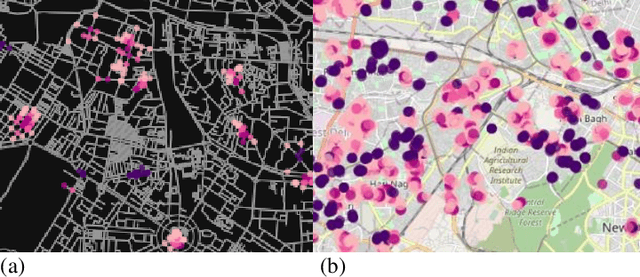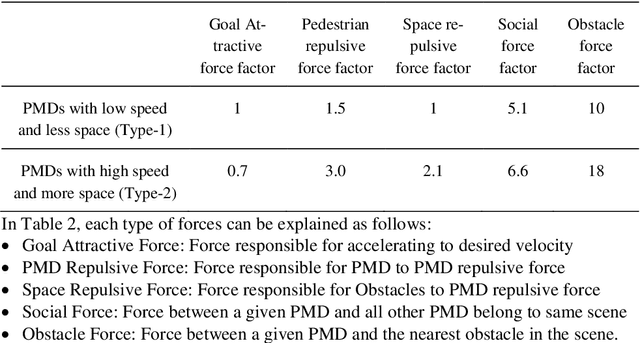Socially acceptable route planning and trajectory behavior analysis of personal mobility device for mobility management with improved sensing
Paper and Code
Dec 07, 2021



In urban cities, with increasing acceptability of shared spaces used by pedestrians and personal mobility devices (PMDs), there is need for pragmatic socially ac-ceptable path planning and navigation management policies. Hence, we propose a socially acceptable global route planner and assess the legibility of the resulting global route. Our approach proposed for choosing global route avoids streets penetrating shared spaces and main routes with high probability of dense usage. The experimental study shows that socially acceptable routes can be effectively found with an average of 10 % increment of route length with optimal hyperpa-rameters. This helps PMDs to reach the goal while taking a socially acceptable and safe route with minimal interaction of different PMDs and pedestrians. When PMDs interact with pedestrians and other types of PMDs in shared spaces, mi-cro-mobility simulations are of prime usage for acceptable and safe navigation policy. Social force models being state of the art for pedestrian simulation are cal-ibrated for capturing random movements of pedestrian behavior. Social force model with calibration can imitate the required behavior of PMDs in a pedestrian mix navigation scheme. Based on calibrated models, simulations on shared space links and gate structures are performed to assist policies related to deciding wait-ing and stopping time. Also, based on simulated PMDs interaction with pedestri-ans, location data with finer resolution can be obtained if the resolution of GPS sensor is 0.2 m or less. This will help in formalizing better modelling and hence better micro-mobility policies.
 Add to Chrome
Add to Chrome Add to Firefox
Add to Firefox Add to Edge
Add to Edge